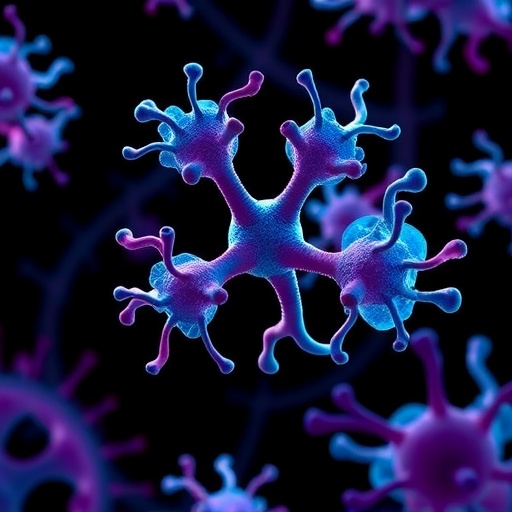Organoids are revolutionizing the landscape of biomedical research, representing a transformational leap beyond conventional two-dimensional cell cultures and animal models. These miniature, three-dimensional cellular constructs recapitulate the intricate architecture and physiological functions of human organs, offering unprecedented opportunities to decipher organ development, understand disease mechanisms, and evaluate pharmacological responses with enhanced precision. Engineered using advanced culture techniques such as air-liquid interface systems, bioreactor cultures, and sophisticated vascularization methods, organoids serve as robust in vitro replicas for a vast array of organ systems, including kidneys, livers, lungs, brains, and intestines.
The air-liquid interface (ALI) culture method stands out as a particularly effective approach for generating organoids that mimic organs with hollow lumens, such as the lungs and intestines. By exposing one surface of the tissue to air while maintaining the other in contact with a nutrient medium, ALI culturing preserves epithelial integrity and enables co-culturing with immune cell populations. This strategy is critical for exploring the tumor microenvironment and immune interactions, thereby enriching studies of cancer biology within physiologically relevant contexts.
Bioreactor cultures represent another frontier in organoid engineering that enhances scalability and complexity. Through controlled agitation and optimized nutrient flow, bioreactors support the growth and maturation of larger organoids such as cerebral structures. These dynamic systems not only facilitate substantial upscaling essential for high-throughput applications but also promote tissue differentiation and vascular network formation, which are imperative for accurately modeling organ-level functionality and drug metabolism.
Vascularization—the integration of blood vessel networks within organoids—has emerged as a pivotal advancement addressing nutrient diffusion limitations inherent in three-dimensional cultures. By enabling perfusion-like conditions, vascularized organoids exhibit improved survival rates, enhanced maturation, and better replication of neurovascular interactions pivotal to organ function and pathology. This vascular integration brings organoids closer to authentically mimicking in vivo conditions, which is vital for translational applications such as disease modeling and tissue regeneration.
Cutting-edge protocols leverage pluripotent and adult stem cells to generate organ-specific progenitors, employing tightly regulated signaling cascades and extracellular scaffolds to guide differentiation and morphogenesis. These efforts yield organoids that reflect the cellular diversity and spatial organization of their in vivo counterparts, allowing multi-dimensional analyses of organ development and pathological remodeling processes with unparalleled fidelity.
The transformative impact of organoids extends deeply into biomedical research applications. Disease modeling has been profoundly refined by organoid platforms, enabling researchers to simulate complex disease states such as oncogenesis, viral infections like Zika, and genetic disorders including cystic fibrosis. By recapitulating pathophysiological hallmarks, organoids facilitate mechanistic insights that were previously unattainable with simplistic models.
Moreover, patient-derived organoid biobanks are catalyzing advancements in drug discovery and personalized medicine. These living libraries reliably preserve genetic and phenotypic heterogeneity, empowering high-throughput screening pipelines that evaluate therapeutic efficacy and toxicity across diverse patient populations. Consequently, organoids are accelerating the transition toward tailored treatment regimens based on individualized organ response profiles, fundamentally reshaping clinical decision-making paradigms.
In the realm of precision medicine and toxicity assessment, organoids offer a compelling alternative to traditional animal testing, reducing species-specific discrepancies in drug metabolism and adverse event prediction. Their physiologically relevant human cellular architecture supports nuanced evaluation of candidate compounds’ safety and potency, thus mitigating failure rates in clinical trials and streamlining regulatory approval processes.
Intriguingly, organoid technologies are increasingly being integrated into Traditional Chinese Medicine (TCM) research, providing a modern experimental platform for dissecting the multi-target effects of herbal compounds. By facilitating active component screening, mechanistic elucidation, and toxicity evaluation in a controlled yet physiologically representative microenvironment, organoids are propelling the modernization and scientific validation of TCM practices in contemporary healthcare.
As organoid methodologies continue to evolve, frontier technologies are synergistically enhancing their sophistication and applicability. Gene editing tools such as CRISPR-Cas9 are harnessed to create precise genetic modifications within organoids, generating bespoke disease models that mirror patient-specific mutations and enabling functional gene-disease association analyses. Coupled with single-cell RNA sequencing, these approaches unravel cellular heterogeneity and lineage trajectories at unprecedented resolution, fostering deeper understanding of developmental biology and pathology.
Three-dimensional bioprinting adds another dimension by allowing the automated and spatially precise fabrication of organoid structures. This capability addresses traditional limitations related to reproducibility and complexity, enabling scalable production of organoids with defined architectures potentially suitable for regenerative therapies. Furthermore, artificial intelligence-driven analytics are transforming data interpretation by extracting patterns and predictive insights from complex organoid datasets, accelerating hypothesis generation and experimental design.
Despite these remarkable advancements, challenges persist in standardizing organoid complexity, reducing production costs, and ensuring reproducibility across laboratories. Addressing these obstacles is essential to fully realize organoids’ potential in basic research and clinical translation. Nevertheless, the integration of organoid technology with cutting-edge bioengineering, genomics, and computational methods promises a paradigm shift in our understanding of human biology and disease, heralding a new era of personalized, predictive, and integrative medicine.
This innovative trajectory underscores organoids as quintessential platforms for future biomedical breakthroughs, transforming how we approach drug development, regenerative medicine, and therapeutic interventions. Their ability to recapitulate human-specific physiology and pathology establishes them as indispensable tools for bridging preclinical discoveries with clinical outcomes, ultimately driving forward the frontiers of medical science.
Subject of Research: Not explicitly provided
Article Title: Innovations in Organoid Engineering: Construction Methods, Model Development, and Clinical Translation
News Publication Date: 19-Sep-2025
Web References: http://dx.doi.org/10.14218/FIM.2025.00023
Image Credits: Hongtao Jin
Keywords: Organoids, Pluripotent stem cells, Tumor microenvironments, Drug development




